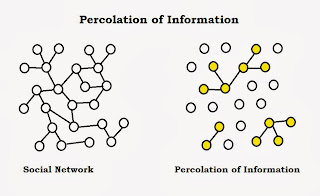By Dr. Susan Sasiadek (March 13, 2015)
While working on my MBA it was clear to me that the
number one goal for all companies was to turn a profit. I remember learning early on that owning a
business is much like the game of Monopoly; as long as you have money, you re
in the game. Once you are out of money, the game is over. So why then wouldn’t
the focus of owning a business be centered on profits? For many companies this is exactly where the
focus is. However, there has been a dynamic shift in the thinking as to why
entrepreneurs set out to create a business and how to maintain a successful
organization.
One of the beliefs that lies within the hearts of many
entrepreneurs is to do what you have a passion for and the profits will follow.
A similar concept I have often shared with young college students; do what you
love and the money will come. Although
this sounds easy enough, many times people and organizations lose their focus
of what it is they set out to achieve. As the world is constantly changing so do
companies and the people that work for them. How can one start a business they
are passionate about, ensure it will be successful and keep the heart of an
entrepreneur?
- Create a mission that drives not only your company, but the employees that are invested in working for you.
- When you start a business always have a purpose. One of the best ways to accomplish this is to have the business product/service with the end result to the client as the goal, not the profit (Cited by Paul Mitchell, Case, n.d.)
- Incorporate a value system that is focuses on employees, giving back to the community and on your customers (Cited by Danny Meyer, Case, n.d.). Philanthropy needs to be part of your organizational culture.
- Embrace rejections and failures as they leave an imprint on you of valuable lessons from which your business will grow (Cited by Paul Mitchell, Case, n.d.).
The greatest asset for any organization are the employees
that work diligently to drive the mission, embrace the values and focus on each
customer. In order to create an organizational culture in which the employees
are driven to perform at this level, it is imperative to have leaders within
the organization that create the dynamics of the culture in which, employees not
only want to come to work each day, but look forward to coming to work. An
environment in which the passion of the founder is passed on to all levels
within the organization. Danny Meyer, the CEO and founder of Shake Shack once
shared that the “best way to be greedy is to focus on your employee’s first,
then your community and third, on your customers (Case, n.d.).
Taking the time to identify your organization’s focus,
purpose and mission, will not only help to create the organizational culture in which the values and passion come
alive; it will also help to ensure a servant style of leadership that focuses on
the people first and profits second.
Case,
Jean . (n.d.) . Two years to build a
billion-dollar brand – with meaning. Forbes under 30 Summit . Retrieved on March 13, 2015, from
http://www.forbes.com/under30video/#/sessions-and-speakers/3855955367001

